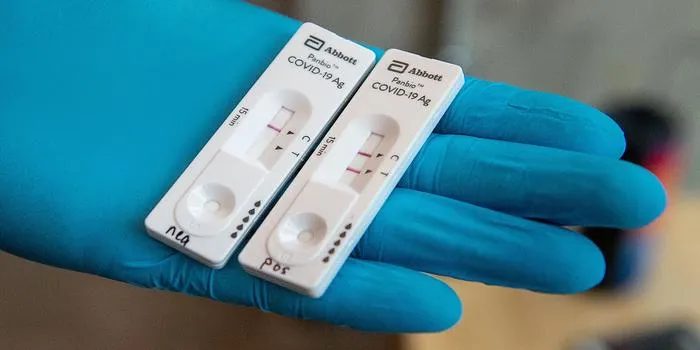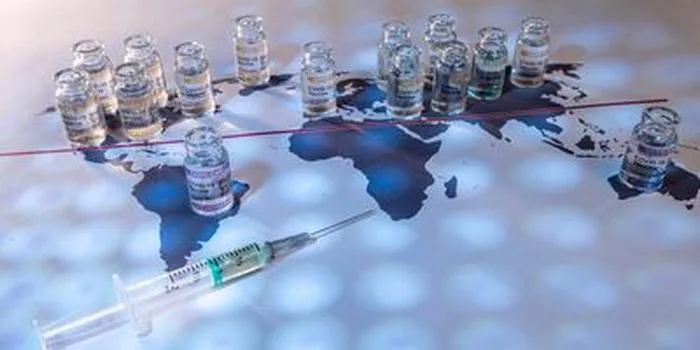Just how accurate are rapid antigen tests? Two testing experts explain the latest data
Rapid antigen tests are a quick way to detect infections, but their accuracy can vary based on factors like timing and viral load. Experts emphasize that while these tests can provide timely results, they may miss some cases, particularly in asymptomatic individuals. Meanwhile, cities around the world have unique nicknames that often reflect their history, culture, or notable characteristics. For instance, New York City is famously known as "The Big Apple," a name that has intriguing origins tied to its vibrant jazz scene and agricultural roots.

As the world continues to navigate through the COVID-19 pandemic, rapid antigen tests have emerged as a popular method for quick screening. But just how accurate are these tests? To shed light on this topic, we’ve consulted two testing experts who have analyzed the latest data on rapid antigen test accuracy. Here’s what they had to say.
The Basics of Rapid Antigen Tests
Rapid antigen tests are designed to detect specific proteins from the virus that causes COVID-19. Unlike PCR tests, which are considered the gold standard for COVID-19 testing, rapid antigen tests provide results in a matter of minutes. This speed makes them particularly useful for screening asymptomatic individuals or for rapid testing in high-risk settings.
Understanding Sensitivity and Specificity
When evaluating the accuracy of rapid antigen tests, two key terms come into play: sensitivity and specificity. Sensitivity refers to the test's ability to correctly identify those with the virus (true positives), while specificity refers to its ability to correctly identify those without the virus (true negatives).
The sensitivity of rapid antigen tests tends to be lower than that of PCR tests. According to recent studies, the sensitivity can range from 50% to 90%, depending on various factors such as the brand of the test, the timing of the test after exposure, and the viral load of the individual being tested. On the other hand, specificity is generally high, often exceeding 90%, which means these tests are quite effective at ruling out infection in individuals who are not carrying the virus.
Latest Data on Accuracy
According to a meta-analysis published in a leading medical journal, the average sensitivity of rapid antigen tests was found to be around 79% for symptomatic individuals and 56% for asymptomatic individuals. This discrepancy highlights the importance of considering symptoms when interpreting test results. For symptomatic individuals, rapid tests can provide a reliable indication of infection, whereas for asymptomatic individuals, confirmatory testing with a PCR test is recommended.
| Test Type | Sensitivity | Specificity |
|---|---|---|
| Rapid Antigen Test (Symptomatic) | 79% | 96% |
| Rapid Antigen Test (Asymptomatic) | 56% | 98% |
| PCR Test | ≥ 95% | ≥ 99% |
Factors Affecting Accuracy
Several factors can influence the accuracy of rapid antigen tests:
- Timing of the Test: The viral load is highest shortly after infection. Rapid antigen tests are most effective when taken during this peak period, typically within the first week of symptoms.
- Quality of the Sample: Proper nasal swabbing technique is critical. Insufficient sample collection can lead to false-negative results.
- Test Brand Variability: Different brands of rapid antigen tests have varying levels of sensitivity and specificity. It is essential to choose tests that have been validated in clinical settings.
Real-World Effectiveness
In real-world scenarios, the effectiveness of rapid antigen tests has shown promising results, particularly in settings like schools, workplaces, and large gatherings. A study conducted in a school setting found that implementing regular rapid antigen testing significantly reduced the transmission of COVID-19 among students and staff. This indicates that even with moderate sensitivity, these tests can play a crucial role in controlling outbreaks.
When to Use Rapid Antigen Tests
Experts recommend using rapid antigen tests in the following situations:
- Symptomatic Individuals: A rapid antigen test can quickly confirm infection, allowing for timely isolation and treatment.
- Screening in High-Risk Settings: Regular testing in environments such as nursing homes, schools, and large events can help identify cases early, preventing outbreaks.
- Post-Exposure Testing: If you have been in close contact with a confirmed case, a rapid test can provide immediate information, but it is best to follow up with a PCR test after a few days.
Limitations and Recommendations
While rapid antigen tests are a valuable tool in the fight against COVID-19, they are not without limitations. A negative result does not completely rule out an infection, particularly in asymptomatic individuals. Therefore, it is crucial to interpret results in conjunction with clinical symptoms and epidemiological context.
Healthcare professionals recommend that rapid antigen tests should be used as part of a comprehensive testing strategy that includes PCR testing, especially in settings with high transmission rates. Additionally, ongoing research and validation studies are essential to improve the accuracy and reliability of these tests.
Conclusion
In summary, rapid antigen tests offer a fast and convenient option for COVID-19 screening, but their accuracy can vary significantly. Understanding the nuances of sensitivity and specificity, along with the context of testing, is vital for effective use. As we continue to adapt to the evolving pandemic landscape, rapid antigen tests will undoubtedly remain an important tool in our public health arsenal.












